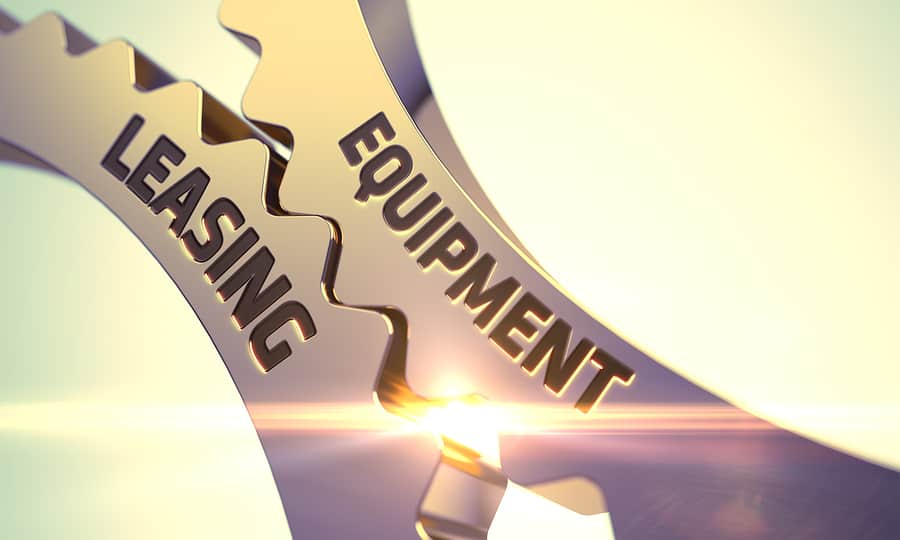 Equipment leasing is a procurement option that has increased in popularity over the years, particularly for young companies who don’t have large stores of capital on-hand. Leasing, which is the rental of equipment over a specified time period, enables companies to quickly compete without having to break the bank.
Equipment leasing is a procurement option that has increased in popularity over the years, particularly for young companies who don’t have large stores of capital on-hand. Leasing, which is the rental of equipment over a specified time period, enables companies to quickly compete without having to break the bank.
There really is no limit in terms of the type of equipment that can be leased — from construction vehicles to laptops, any asset can feasibly be procured using a leasing arrangement.
The advantages of leasing equipment include:
• Saves Capital: Leasing equipment saves capital that may otherwise be used for purchasing equipment. Leasing expedites the asset procurement process without placing a heavy financial burden on companies;
• Access to New Equipment: Leases, particularly short-term leases, enable companies to easily switch-out older equipment for their newer counterparts. This prevents equipment from becoming outdated, which is especially important for companies in the IT sector;
• Financial Benefits: Leasing enables small and mid-sized companies to build their credit rating, take advantage of IRS Section 179 tax benefits, and maintain healthier balance sheets by carrying business expenses instead of liabilities.
In today’s blog post we’ll have a look at some of the unique challenges in the management of equipment leasing and how an Equipment Tracking in SharePoint system can help to address those issues throughout the lease period and beyond.
Lease Management: Common Issues during a Lease’s Lifespan
The lifespan of a lease provides a perspective that will help us to identify the unique challenges involved in leased equipment management. Some key questions that need to be addressed throughout a lease’s period, from document signing to the end-of-lease stage, include:
Lease Signing and Introduction of Assets to Organization
• Documentation: Are lease documents digitized? Is contact information saved?
• Asset Introduction: Are details of the asset listed and saved? How does the asset fit into your existing infrastructure? (e.g., inclusion of a new device in a network, security access)
Asset during Lease Term
• Maintenance: How is maintenance addressed? Is support the responsibility of the lessor or is it your responsibility? How are your maintenance records kept and updated?
• Replacement: If the asset is no longer operable before the lease expires, will a replacement asset be provided by the lessor? Who is responsible in the event of unexpected damage?
Expiration of Lease
• Common choices at lease expiry include the purchase of the equipment for current market value, continuation/renewal of the leasing agreement, lease of replacement equipment, and/or return of the leased equipment;
• What mechanisms are in-place to keep track of these end-of-lease choices?
Using an Equipment Tracking System to Manage Equipment Leases
Maintaining leases is about much more than simply signing on the dotted line and stuffing the paperwork into a file folder. Successful equipment leasing is the result of accurate management of both the lease records and the asset itself. The inclusion of financial factors, such as depreciation, tax accounting, and asset value means that purchasing and procurement management is also a requirement.
A robust Equipment Tracking system used for equipment leasing should include the following features:
- Notifications and Alerts: Capability to automatically create notifications based on leasing and asset data, such as when leases are about to expire, when errors occur with leased assets, when an asset’s status changes, and when an asset change triggers a change in the lease contract;
- Document Management: Capability to centralize the storage of digitized leasing documentation and associate contracts with specific assets. The idea here is that specific assets are searchable, their details viewable, and associated documents (contract, tax forms, logistics records) are easily accessible… all in a user-friendly interface;
- Purchasing & Procurement: Equipment leasing has several repercussions in terms of its financial impact. Leasing equipment is financially beneficial from a taxation and accounting perspective, but it does require management features that are reliable, accurate, and audit-ready. The integration of a Purchasing solution with an Asset Management system means that financial data is readily accessible when viewing asset data. An asset’s market value, expected lifespan, depreciation, and cost can all be used when negotiating or renewing a lease’s terms or when making end-of-lease decisions.
Asset Management and Purchasing/Procurement systems should be accessible from a holistic platform (e.g., Microsoft SharePoint) that addresses both communication and collaboration. When leased equipment is used, communication across the enterprise is key to the smooth fulfillment of the lease. For example, compliance and safety officers need to be in-the-loop when operating specialized or large machinery, administrators need to be included when dealing with user access requests and device configurations, and procurement managers need to be consulted when a change in asset status requires modifications to the leasing agreement.
A centralized platform helps to keep everyone on the same page while facilitating easy communication between departments and divisions. External solutions help to maximize the native productivity features in SharePoint, such as Equipment Management systems (manage both assets and leases), Help Desk ticket management (automate asset communications via ticket routing), and communication integration apps (such as using Outlook to integrate e-mails with ticket management).
